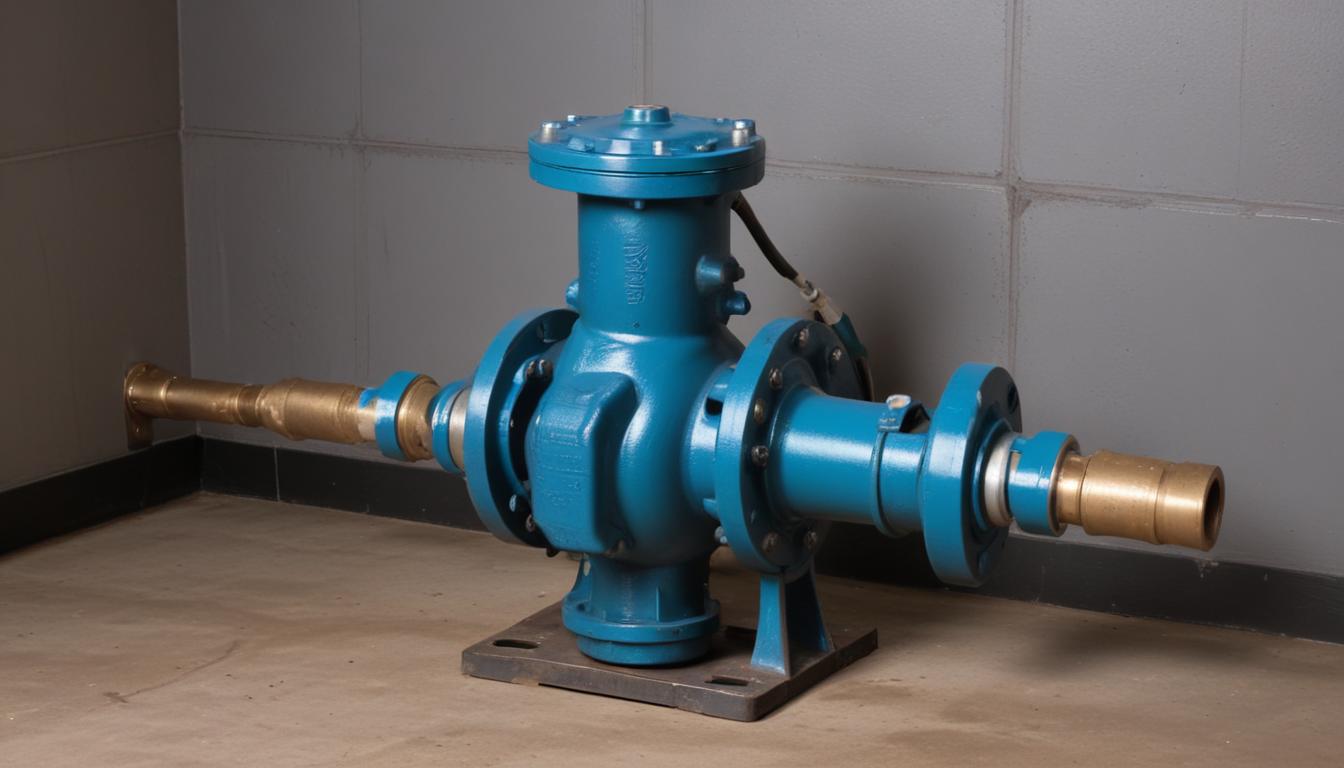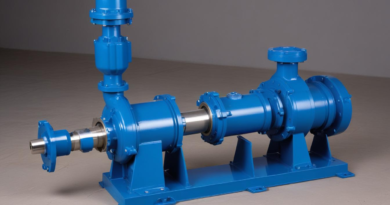how to troubleshoot low pump flow
Low pump flow can often be attributed to blockages and obstructions within the system. Identifying and removing these impediments is a crucial step in effective troubleshooting. The following approaches can help in diagnosing and resolving such issues:
Common Sources of Blockages
- Debris Accumulation: Sediments, rust, and other particles can accumulate in the pipes or the pump itself.
- Buildup in Strainers and Filters: Strainers and filters are designed to catch contaminants but can become clogged over time.
- Internal Pipe Corrosion: Corrosion inside pipes can narrow the passageway, restricting flow.
- Foreign Objects: Items inadvertently introduced into the system can block the flow.
Steps to Identify and Remove Blockages
- Visual Inspection:
- Examine all accessible sections of the piping and pump for visible signs of debris or buildup.
- Check strainers and filters for accumulated particles and clean or replace them as necessary.
- Flow Measurement:
- Use flow meters to determine if there is a significant drop in flow rate compared to standard operational levels.
- Identify the specific section where the flow reduction is most pronounced.
- Pressure Testing:
- Conduct pressure tests to identify areas where pressure drops occur, indicating potential blockages.
- Utilize differential pressure gauges to pinpoint the location of the obstruction.
- Systematic Cleaning:
- Isolate the affected section and perform mechanical cleaning using appropriate tools.
- Apply chemical cleaners if necessary, ensuring compatibility with system materials.
- Inspection of Pump Components:
- Disassemble parts of the pump to check for internal blockages.
- Clean or replace components that show signs of obstruction.
Preventative Measures
Implementing regular maintenance and monitoring can prevent future blockages and ensure consistent pump performance. Consider the following solutions:
| Measure | Description |
|---|---|
| Scheduled Cleaning | Regularly clean strainers, filters, and pump components to prevent buildup. |
| Water Treatment | Implement water treatment processes to reduce sediment and corrosion. |
| Flow Monitoring | Continuously monitor flow rates to detect anomalies early. |
| Quality Control | Ensure that only clean, contaminant-free water enters the system. |
Addressing blockages and obstructions promptly not only resolves issues related to low pump flow but also enhances the overall efficiency and longevity of the pump system.
inspect pump and motor alignment
Proper alignment between the pump and motor is essential for maintaining optimal performance and preventing issues such as low pump flow. Misalignment can lead to excessive vibrations, increased wear and tear, and inefficient operation, all of which contribute to reduced flow rates. To ensure effective troubleshooting, the following steps outline how to inspect and correct pump and motor alignment:
Signs of Misalignment
- Unusual Vibrations: Excessive or abnormal vibrations during operation can indicate misalignment.
- Excessive Noise: Unusual noises such as grinding or knocking sounds may be a result of misaligned components.
- Increased Energy Consumption: Misalignment often causes the system to work harder, leading to higher energy usage.
- Premature Wear: Accelerated wear on bearings, seals, and coupling components is a common symptom.
Steps to Inspect Alignment
- Visual Inspection:
- Examine the physical connection between the pump and motor for any visible signs of misalignment or wear.
- Check coupling components for cracks, looseness, or damage.
- Measurement Techniques:
- Use dial indicators to measure the displacement and angular misalignment between the shaft centers.
- Employ laser alignment tools for precise measurements, ensuring alignment within manufacturer specifications.
- Operational Assessment:
- Monitor the system during startup and shutdown for any irregular behavior that may indicate alignment issues.
- Analyze vibration data using specialized equipment to identify patterns consistent with misalignment.
Corrective Actions
- Adjusting Alignment:
- Make incremental adjustments to the motor or pump base to achieve proper alignment based on measurement data.
- Ensure that adjustments are made evenly to avoid introducing new stresses into the system.
- Replacing Worn Components:
- Swap out damaged or worn coupling parts to restore proper alignment and prevent further issues.
- Upgrade to higher-quality components if recurring alignment problems are detected.
- Reinforcing Mounting Structures:
- Ensure that both pump and motor mounts are secure and free from movement that could cause misalignment.
- Use vibration-damping mounts to minimize the impact of operational vibrations on alignment.
Tools and Equipment for Alignment
| Tool | Purpose |
|---|---|
| Laser Alignment Systems | Provide precise measurements of shaft alignment in both angular and parallel displacement. |
| Dial Indicators | Measure the degree of misalignment by detecting displacement in multiple directions. |
| Vibration Analyzers | Assess the vibration patterns to identify potential alignment issues. |
| Plumb Bobs and Spirit Levels | Offer basic alignment checks in environments where high-precision tools are unavailable. |
Preventative Measures
Implementing regular alignment checks and maintenance can significantly reduce the occurrence of low pump flow related to misalignment. Consider the following preventative strategies:
- Routine Inspections: Schedule periodic alignment assessments as part of the maintenance program.
- Training Personnel: Ensure that maintenance staff are properly trained in alignment techniques and the use of alignment tools.
- Monitoring Systems: Utilize continuous monitoring systems to detect alignment deviations in real-time.
- Quality Installation: During initial installation, prioritize precise alignment to establish a strong foundation for ongoing operation.
Addressing pump and motor alignment issues promptly is a vital step in troubleshooting low pump flow, ensuring reliable performance, and extending the lifespan of the pumping system.
assess pump seals and connections
Seals and connections play a pivotal role in maintaining the integrity and efficiency of a pump system. Any compromise in these components can lead to low pump flow and potentially escalate into more significant operational issues. Ensuring that seals and connections are in optimal condition is essential for effective troubleshooting and long-term pump performance.
Signs of Faulty Seals and Connections
- Leakage: Visible signs of fluid escaping around the pump or piping connections indicate compromised seals.
- Reduced Efficiency: Decreased flow rates can result from pressure loss due to leaks in seals or connections.
- Unusual Noises: Hissing or dripping sounds may signify seal failures or connection loosening.
- Corrosion or Wear: Deterioration of seals and connection parts can impede proper sealing and flow.
Steps to Inspect Seals and Connections
- Visual Inspection:
- Carefully examine all accessible seals and connections for signs of leakage, corrosion, or physical damage.
- Look for moisture accumulation or drip patterns that may indicate hidden leaks.
- Leak Testing:
- Utilize pressure gauges to monitor system pressure and identify any abnormal drops that could signal leaks.
- Perform dye testing in opaque systems to trace and locate the source of leaks accurately.
- Seal Integrity Check:
- Inspect seals for signs of cracking, brittleness, or deformation that could impair their functionality.
- Replace any damaged seals promptly to prevent further leakage and maintain flow integrity.
- Connection Tightness:
- Ensure all threaded connections are securely tightened using appropriate tools to prevent leaks.
- Avoid over-tightening, which can damage threads and compromise seal integrity.
- Component Testing:
- Test the performance of seals under operational conditions to verify their effectiveness.
- Assess connection points for any signs of stress or fatigue that may affect their sealing capability.
Solutions for Faulty Seals and Connections
- Seal Replacement:
- Carefully remove the damaged seal to avoid contaminating the system.
- Install a new seal, ensuring it matches the specifications required for the application.
- Follow manufacturer guidelines for proper installation to guarantee effective sealing.
- Tightening Connections:
- Use torque wrenches to achieve the recommended tightness for all connections.
- Apply thread sealants or tapes where appropriate to enhance leak prevention.
- Upgrading Components:
- Replace outdated or substandard seals and fittings with high-quality, durable alternatives.
- Consider using corrosion-resistant materials in environments prone to harsh conditions.
- Professional Repair:
- Engage qualified technicians for complex seal and connection repairs to ensure compliance with industry standards.
- Ensure that repairs are thorough to maintain system integrity and prevent recurrence of issues.
Preventative Measures
Implementing proactive maintenance strategies can effectively prevent issues related to seals and connections, thereby ensuring sustained pump performance. Consider the following solutions:
| Measure | Description |
|---|---|
| Regular Inspections | Conduct routine checks of seals and connections to identify and address wear early. |
| Proper Installation | Ensure seals and connectors are installed correctly according to manufacturer specifications. |
| Use of High-Quality Materials | Opt for durable, corrosion-resistant seals and fittings suitable for the operating environment. |
| System Monitoring | Implement monitoring systems to detect pressure drops or leakages in real-time. |
| Training Personnel | Educate maintenance staff on proper handling and maintenance of seals and connections. |
Addressing issues with pump seals and connections is a vital aspect of troubleshooting low pump flow, ensuring the reliability and efficiency of the pumping system.
evaluate system pressure and flow settings
 System pressure and flow settings are critical parameters that directly influence the performance of a pump system. Incorrect settings can lead to low pump flow, inefficient operation, and increased wear on system components. Proper evaluation and adjustment of these settings are essential steps in effective troubleshooting and maintaining optimal pump functionality.
System pressure and flow settings are critical parameters that directly influence the performance of a pump system. Incorrect settings can lead to low pump flow, inefficient operation, and increased wear on system components. Proper evaluation and adjustment of these settings are essential steps in effective troubleshooting and maintaining optimal pump functionality.
Signs of Incorrect Pressure and Flow Settings
- Inconsistent Flow Rates: Fluctuations in flow rates can indicate that the system pressure is not properly regulated.
- Excessive Pressure: Higher than normal pressure may cause stress on the pump and piping, leading to potential failures.
- Low Pressure: Insufficient pressure can result in inadequate flow, affecting the overall system performance.
- Alarms and Indicators: System alarms or warning indicators related to pressure and flow discrepancies.
- Energy Inefficiency: Increased energy consumption due to the pump working harder to maintain desired flow rates.
Steps to Evaluate Pressure and Flow Settings
- Review System Specifications:
- Consult the manufacturer’s guidelines to understand the optimal pressure and flow parameters for the pump.
- Ensure that the current system settings align with the specified requirements.
- Measure Current Pressure and Flow:
- Use calibrated pressure gauges to accurately measure the system pressure at various points.
- Employ flow meters to determine the actual flow rates being achieved.
- Compare Against Baseline Data:
- Analyze historical data to identify any deviations from normal operating conditions.
- Determine if recent changes in the system have affected pressure and flow settings.
- Assess System Components:
- Inspect valves, regulators, and other control devices to ensure they are functioning correctly.
- Check for any restrictions or malfunctions that may impact pressure and flow.
- Evaluate Pump Performance:
- Assess the pump curve to ensure the pump is operating within its designed range.
- Identify any discrepancies between the expected and actual performance metrics.
Solutions for Pressure and Flow Issues
- Adjust Pressure Settings:
- Calibrate pressure regulators to align with the system’s required operating pressure.
- Implement automated control systems for dynamic pressure adjustment based on demand.
- Optimize Flow Rates:
- Modify pump speed using variable frequency drives (VFDs) to achieve desired flow rates.
- Reconfigure piping layouts to minimize resistance and enhance flow efficiency.
- Upgrade System Components:
- Replace outdated or malfunctioning valves and control devices to improve system responsiveness.
- Install high-efficiency pumps that better match the system’s pressure and flow requirements.
- Implement Flow Balancing:
- Use flow balancing valves to ensure even distribution of flow across the system.
- Adjust individual branch flows to meet specific application needs without overloading the system.
Preventative Measures
Implementing proactive strategies can help maintain appropriate pressure and flow settings, preventing issues related to low pump flow and enhancing overall system reliability. Consider the following solutions:
| Measure | Description |
|---|---|
| Regular Calibration | Periodically calibrate pressure gauges and flow meters to ensure accurate measurements. |
| Scheduled Maintenance | Conduct routine inspections and maintenance of valves, regulators, and control devices. |
| System Monitoring | Implement continuous monitoring systems to track pressure and flow in real-time, enabling early detection of anomalies. |
| Training and Protocols | Educate maintenance personnel on optimal pressure and flow settings and the importance of maintaining these parameters. |
| Automated Controls | Integrate automated control systems that can dynamically adjust pressure and flow based on system demands. |
By meticulously evaluating and adjusting system pressure and flow settings, operators can effectively address low pump flow issues, ensuring the pump operates within its optimal range and the overall system maintains high efficiency and reliability.
examine electrical components and controls
Electrical issues can significantly impact pump performance, leading to low pump flow and other operational problems. Ensuring that all electrical components and controls are functioning correctly is a crucial aspect of effective troubleshooting. Addressing electrical faults promptly helps maintain the reliability and efficiency of the pump system.
Common Electrical Problems Affecting Pump Flow
- Power Supply Interruptions: Inconsistent or inadequate power supply can cause the pump to operate below its required capacity.
- Faulty Wiring and Connections: Loose, damaged, or corroded wires can lead to intermittent pump operation or complete failure.
- Defective Motor: Issues within the motor, such as winding failures or overheating, can reduce pump efficiency and flow rates.
- Control System Malfunctions: Faulty sensors, switches, or control modules can disrupt the proper regulation of pump operations.
- Incorrect Voltage Levels: Operating the pump at incorrect voltage levels can impair performance and lead to reduced flow.
Steps to Inspect Electrical Components and Controls
- Visual Inspection:
- Examine all electrical connections for signs of wear, corrosion, or damage.
- Inspect wiring for any visible breaks, fraying, or loose connections.
- Check for burnt components or discoloration on electrical panels and devices.
- Voltage and Current Testing:
- Use a multimeter to verify that the pump is receiving the correct voltage as per the manufacturer’s specifications.
- Measure the current draw of the motor to ensure it is within the normal operating range.
- Identify any deviations that may indicate electrical inefficiencies or faults.
- Inspect Control Systems:
- Evaluate the functionality of control panels, switches, and relays to ensure they are operating correctly.
- Test sensors and feedback devices for accurate performance and calibration.
- Verify that programmable logic controllers (PLCs) or other control units are functioning without errors.
- Check Wiring and Components:
- Assess the condition of all wiring harnesses and replace any that show signs of damage.
- Ensure that all connections are secure and properly insulated.
- Inspect and test circuit breakers and fuses, replacing any that are faulty.
- Evaluate Motor Health:
- Listen for unusual noises from the motor, such as grinding or humming, which may indicate internal issues.
- Check for excessive heat buildup around the motor housing.
- Perform an insulation resistance test to ensure the motor windings are intact.
Solutions for Electrical Issues
- Repair or Replace Faulty Wiring:
- Repair any damaged wires or replace them entirely if necessary to ensure reliable power delivery.
- Use high-quality connectors and materials to prevent future issues.
- Upgrade Power Supply:
- Ensure that the power supply meets the pump’s voltage and current requirements.
- Install surge protectors and uninterruptible power supplies (UPS) to safeguard against power fluctuations.
- Replace Defective Components:
- Swap out any malfunctioning motors, control units, or sensors with new, reliable parts.
- Ensure replacements meet the specifications and compatibility requirements of the existing system.
- Optimize Control Systems:
- Recalibrate sensors and control modules to ensure accurate operation.
- Update or reprogram PLCs and other control software to address any operational issues.
- Ensure Proper Installation:
- Follow manufacturer guidelines for the installation of electrical components to prevent misconfigurations.
- Use appropriate cable management techniques to protect wiring from physical damage.
Preventative Measures
Implementing proactive strategies can help prevent electrical issues that contribute to low pump flow, ensuring sustained pump performance and reliability. Consider the following solutions:
| Measure | Description |
|---|---|
| Regular Electrical Inspections | Conduct routine checks of all electrical components and connections to identify and address potential issues early. |
| Scheduled Maintenance | Perform scheduled maintenance on motors, control systems, and electrical panels to ensure optimal functionality. |
| Use of Quality Components | Invest in high-quality wiring, connectors, and electrical devices to enhance system reliability and longevity. |
| Implement Monitoring Systems | Utilize continuous monitoring tools to track electrical parameters and detect anomalies in real-time. |
| Training and Safety Protocols | Educate maintenance personnel on proper electrical safety practices and troubleshooting techniques. |
Addressing electrical components and control issues is essential for effective troubleshooting of low pump flow problems. Maintaining a robust electrical system ensures that the pump operates efficiently and with minimal interruptions, thereby enhancing the overall performance and reliability of the pumping system.




